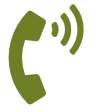B2B Referral Program and B2C or Consumer Referral Program has a very thin variation. The programs follow a somewhat similar line of approach, although the tactics can need to vary.
So, let’s look at some of the similarities and differences in creating engaging referral programs. It’s important to know you can pull ideas from one or the other to generate changes in revenue earnings and the creation of leads who convert more and at a faster rate – far faster than traditional marketing leads.
Here at NextBee, we’re continually assisting brands in building more robust pipelines. Pipelines which routinely fill with qualified and higher converting B2B or B2C leads. Okay, so first things first. Why should you have a Referral Program?
According to research, – 69% of businesses with referral programs report that their deals are closing faster. It means if you’re not taking advantage of a referral program, your competition is, and they’re pulling ahead of you.
Reaching your target community is crucial so that people are aware of your brand, your products, and the services you offer.
Here are some tips and examples of what you should do in a referral program along with notes where applicable, on how to structure it differently depending on if it’s a B2B Referral Program or a Consumer Referral Program.
Step 1: Plan for Customization and Transparency
Your business is unique. Even if you provide a product or service that others do as well, your business is still impressive; it’s yours.
Therefore, your referral program needs to reflect you, your business, and your customers. A customized and branded referral program always puts you in a ‘safe zone’ in terms of engaging and converting because users keep that feeling of familiarity, i.e., they hold that bond.
For creating a successful referral program, one best practice is to start by engaging your customers early. Ask them for feedback on what they think about a referral program, incentivize them to refer others, limit them from referring others, etc.
There is a real goldmine in their feedback, and it’s as simple as asking (SurveyMonkey, Google Forms, etc. are great for this). Once you have the referral campaign structured, continue to engage critical influencers by sharing things such as:
- How will the information be used?
- Who will reach out to the referee?
- When will they reach out?
- How does your referral process works?
Doing so lets them know you listened and that you’re transparent on everything, so they adopt sharing the program faster and continue to trust and like you more. (Hint: People buy from people they know, like, and trust!).
Step 2: Plan Your Referral Program’s Promotion
If done right, you’ve started the promotion process in step one by engaging your audience for input. Still, now it’s time to start promoting to everyone, and a planned promotional strategy of your referral program is essential.
Build an online presence first, preferably starting with your website and then moving on to social networks like Facebook, LinkedIn, Twitter, etc.
You can also promote your referral program at critical touchpoints such as right after they have made a purchase via order confirmation pages, purchase confirmation emails, etc. Make sure to use offline channels, too, especially for B2B Referral Programs.
Participating in Trade Shows and Industrial fairs can create a significant impact and be a springboard for networking via business forums, business directories, 3rd party business portals, etc.
Once you’ve started building those channels out, you can focus even more on digital marketing expansion techniques such as tweaking your website, search engine marketing, social media marketing, etc. which makes your brand and referral program more visible.
Step 3: Offer Correct Rewards/Incentives and Build a Community
Customers and almost all businesses are interested in getting benefits. Since you’ve connected with them – what benefits your program provides, what will they gain from a successful B2B referral marketing, etc. you must make sure you offer rewards and incentives which line up with their input.
If you can start by offering something widely accepted by your customers, you’re setting yourself up for success. And while reward size and type can matter, it is not always true that a more significant incentive will drive more consumers or partners to your company.
Some of the most significant rewards can be charity based or a thank you messages. All of these build a strong relationship with your customers. But whatever rewards you choose, make sure to fulfill them timely (preferably automatically so there’s less stress on you, the customer, and your company).
Step 4: Get Expert Help
According to various marketing researchers, you need to connect with your target audience to keep your brand or product “front of mind.” A referral marketing solution provides extra mileage to your efforts, thus helping you maintain strong brand affinity.
But, building and developing a genuinely useful and result oriented referral program is challenging. A good referral program includes different tactics needed for creating a B2B Referral Program or creating a B2C/Consumer Referral Program.
NextBee has developed a unique and proven process and methodology over the past ten years, which improves engagement and offers limitless reward solutions for each business we work with.
We would love to share more insights about Referral Marketing Programs. We offer complete engagement solutions to help your business engagement marketing efforts.
Connect with us to schedule a 1-on-1 planning conversation or call us at 1-800-547-1618.














